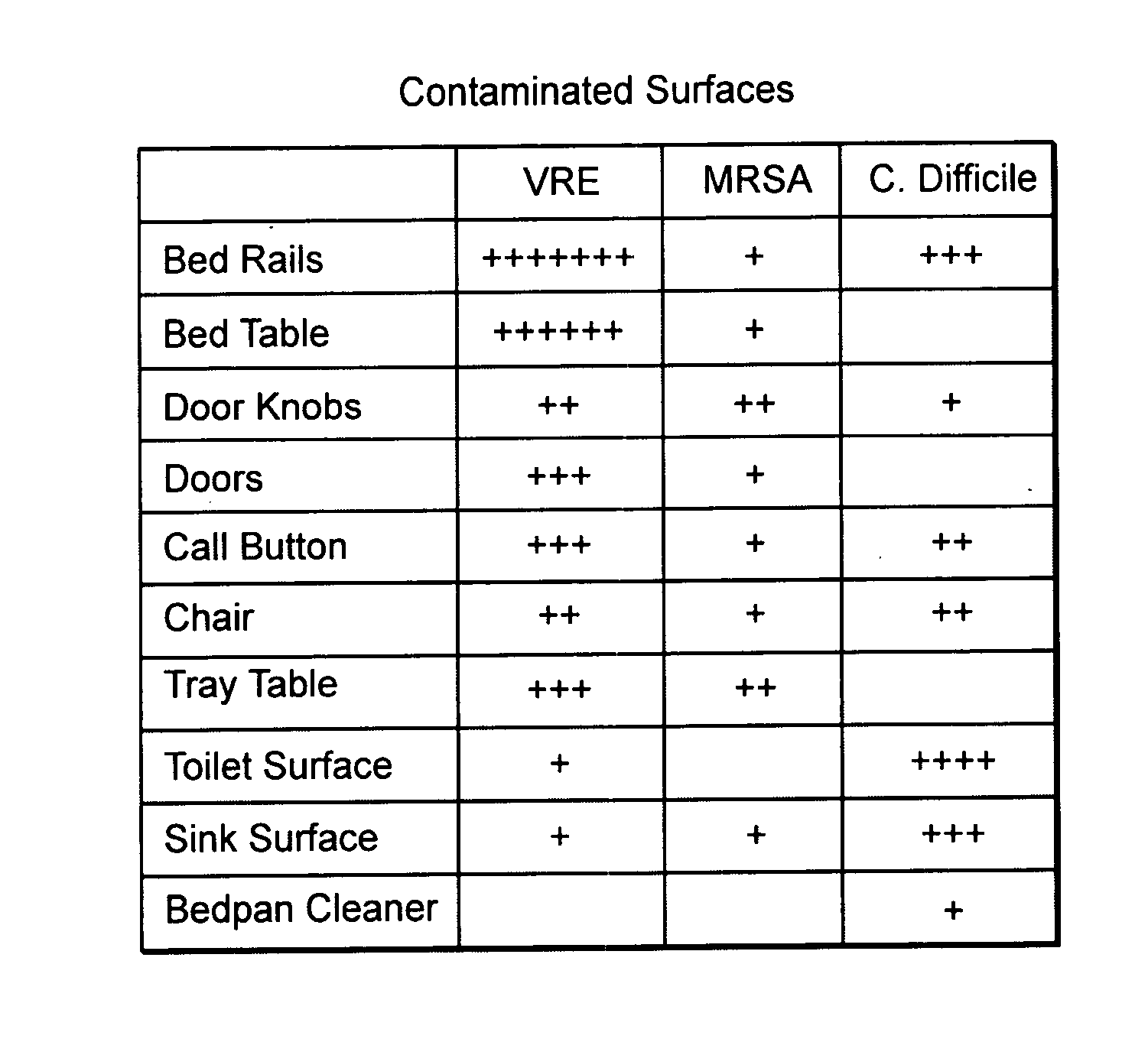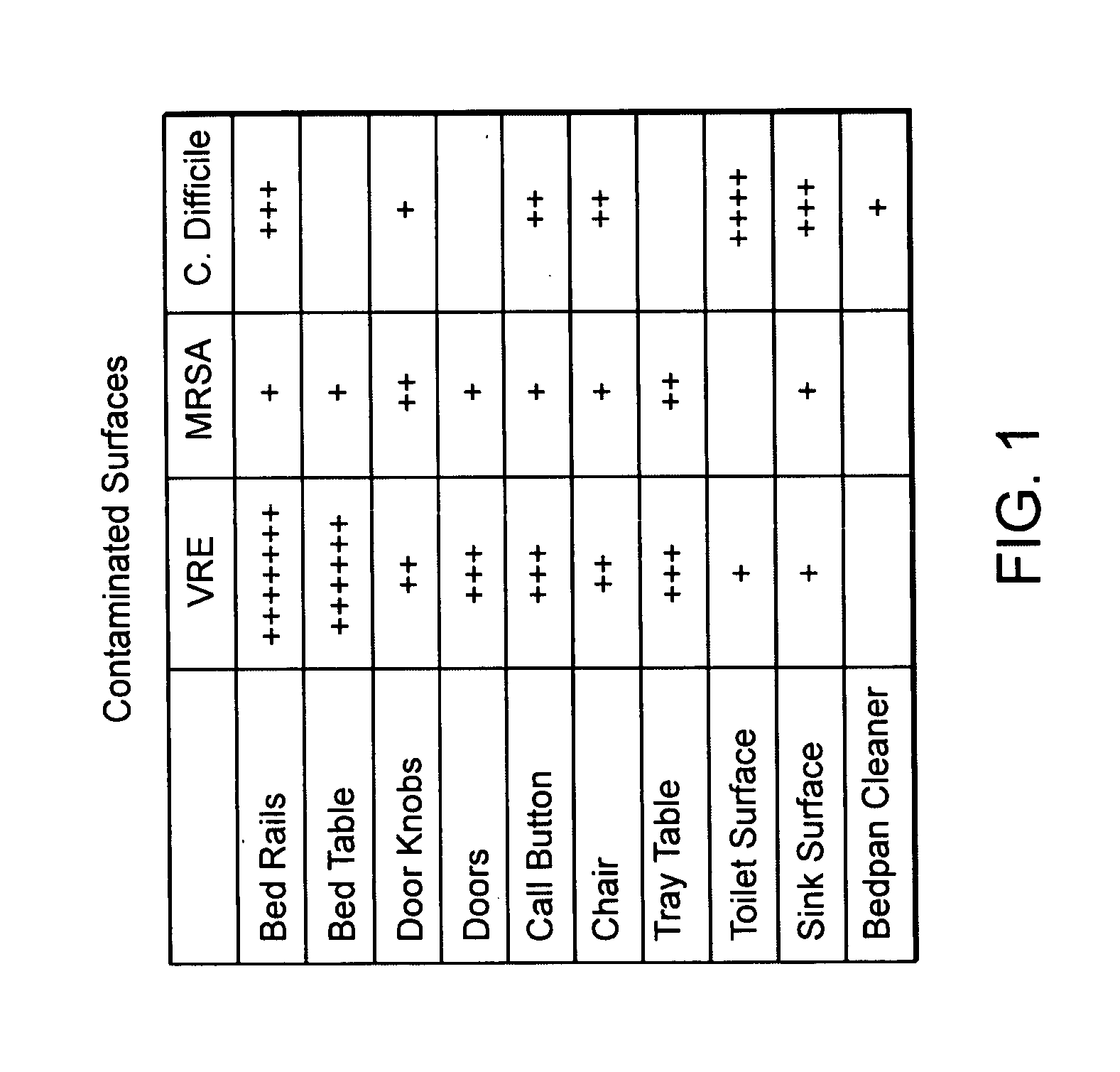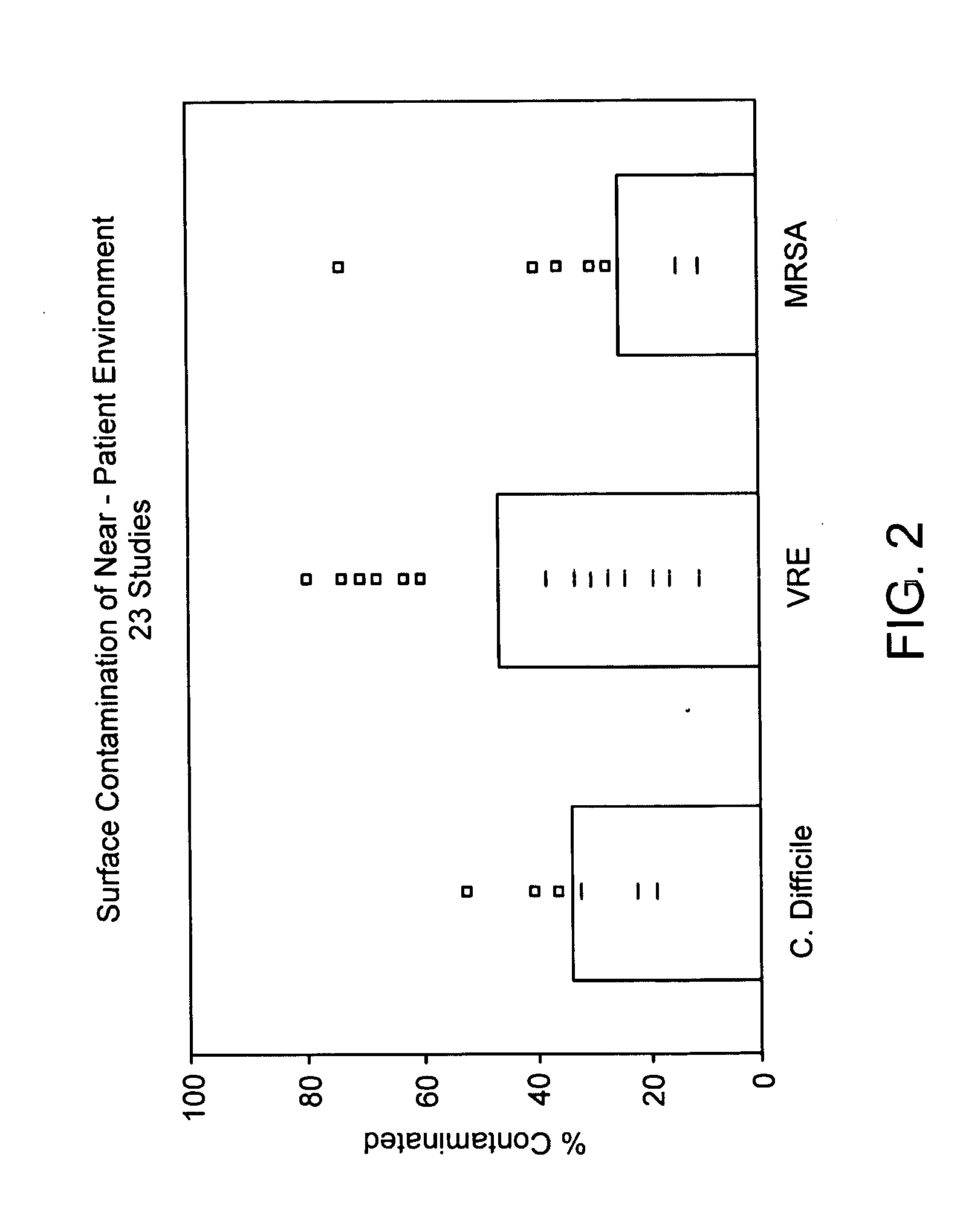Monitoring cleaning of surfaces
a technology for cleaning surfaces and cleaning programs, applied in the direction of cleaning using liquids, instruments, applications, etc., can solve the problems of limiting the effectiveness of such procedures, and limiting the use of present antibiotics, so as to enhance the cleaning program
- Summary
- Abstract
- Description
- Claims
- Application Information
AI Technical Summary
Benefits of technology
Problems solved by technology
Method used
Image
Examples
Embodiment Construction
[0037] Definitions. As used in this description and the accompanying claims, the following terms shall have the meanings indicated, unless the context otherwise requires:
[0038] Terminal cleaning refers to cleaning of a hospital room following departure of its most recent occupant and prior to the arrival of its immediately prospective occupant.
[0039] Black light refers to ultraviolet or UV radiation emanating from an ultraviolet source.
[0040] Transparent refers to capable of transmitting light so that objects and images beyond can be clearly perceived.
[0041] Nosocomial infections are infections arising from and transmitted within a hospital environment.
[0042] Cleaning of patient rooms is an ongoing process in a hospital. Each patient occupying a room may be subject to pathogens left by a prior occupant of the room and, in turn, may insert his or her specific pathogens into the room environment. An aim of room cleaning is to decrease the likelihood of the environmental transmiss...
PUM
| Property | Measurement | Unit |
|---|---|---|
| transparent | aaaaa | aaaaa |
| transparent | aaaaa | aaaaa |
| transparent | aaaaa | aaaaa |
Abstract
Description
Claims
Application Information
 Login to View More
Login to View More - R&D
- Intellectual Property
- Life Sciences
- Materials
- Tech Scout
- Unparalleled Data Quality
- Higher Quality Content
- 60% Fewer Hallucinations
Browse by: Latest US Patents, China's latest patents, Technical Efficacy Thesaurus, Application Domain, Technology Topic, Popular Technical Reports.
© 2025 PatSnap. All rights reserved.Legal|Privacy policy|Modern Slavery Act Transparency Statement|Sitemap|About US| Contact US: help@patsnap.com



